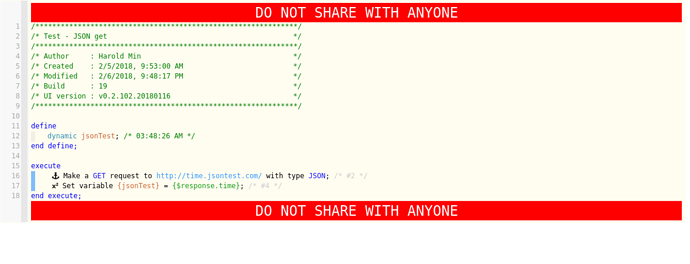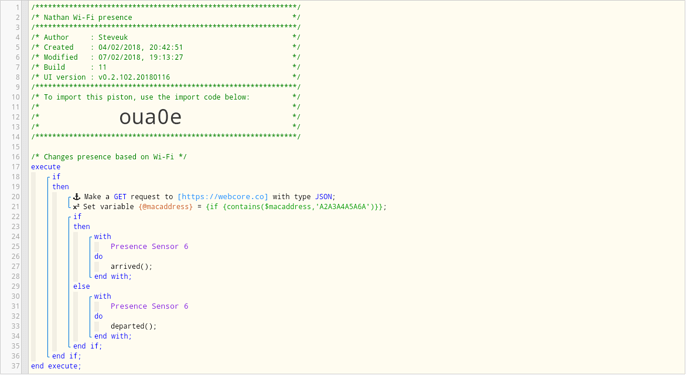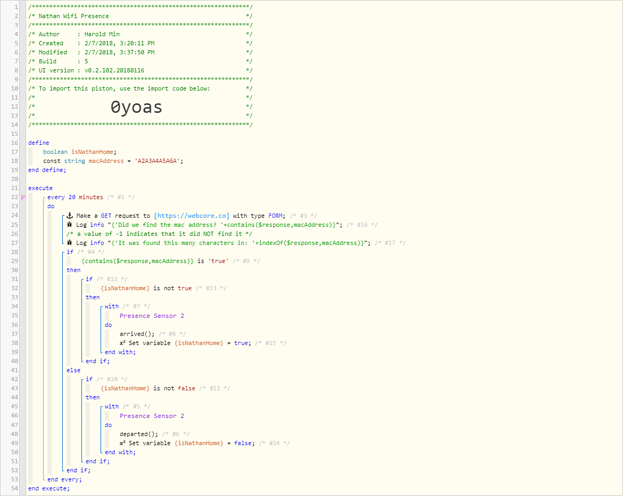1) Give a description of the problem
(Hi I’m trying to extract text from my routers status page using HttpGet)
2) What is the expected behavior?
(I have a sky router (UK) and what I’m trying to do is create a piston that will read it’s status page which is a local IP address Http://192.168.0.1
Then i want to try and read the text that’s taken from the page to see if it contains a certain Mac address)
3) What is happening/not happening?
(I’m not actually sure on which way to create the piston and read the info from it.
This is how I have it at the moment I’ve got it set to save to a string variable is this correct?, I know the http get works ok with the page as I use it on my phone with tasker I didn’t realise you could do it on this
Thanks for any help)
4) Post a Green Snapshot of the piston![]()
(

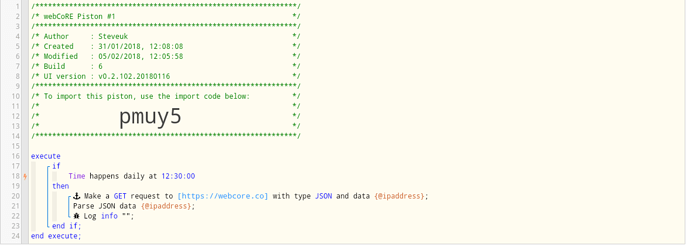
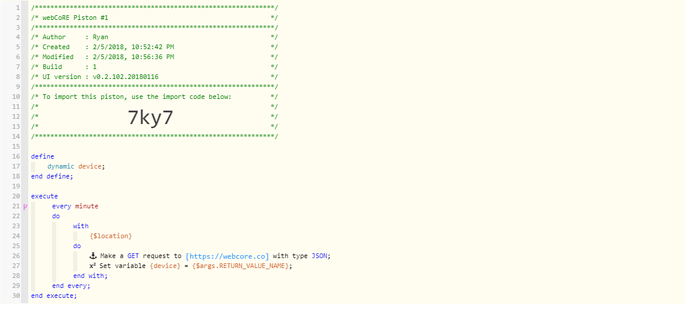

 (hes 22 lol)
(hes 22 lol) I’m still learning the basics for now lol
I’m still learning the basics for now lol